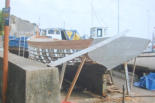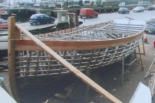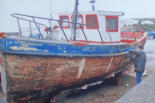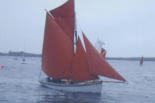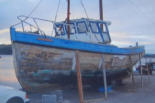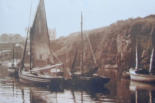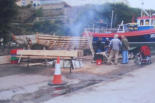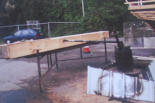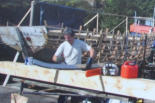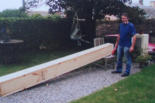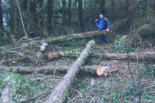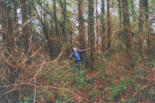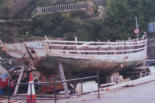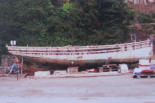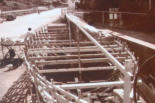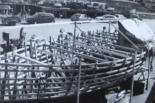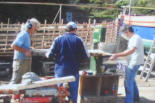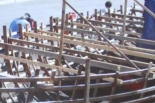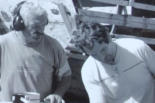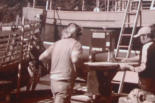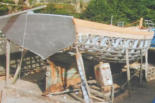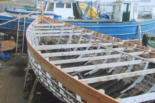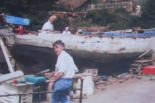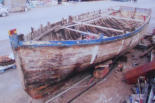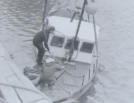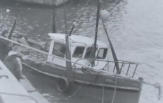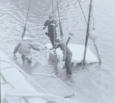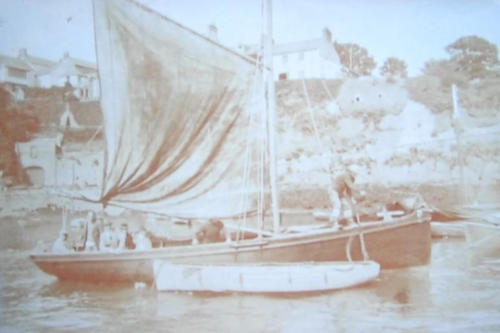





© 2021 www.dunmoreeast.net. All rights reserved Last updated 26 December 2021


Dunmore East is a small fishing village on
the south-east coast of Ireland, 16kms from
the city of Waterford.
It sits on the western side of the Waterford
Harbour Estuary, 4.8kms from Hook Head in
Wexford.
Dunmore East, Co. Waterford,
Ireland

Stories
The St. Agnes is probably the oldest surviving sail/fishing vessel built on the South Coast of
Ireland. Her keel is 26 feet, 31 feet overall and was laid down in a field overlooking Stony
Cove in Dunmore East in 1899. She was built by John Halley and Nicholas Murphy of pitch
pine in oak. When her hull was completed she was lowered down and floated in Stony Cove
with ropes and tackle. She was then rigged with mast, spars and red canvas sails. In 1902
she was officially registered as a fishing boat with registration number W229, photos 1 and 2
show her in her original form as a young boat in the early 20th Century in Dunmore harbour.
She continued her working life as an inshore fishing boat in this form probably until after the
Second World War. Buddy Fancy Power remembers when boats of her class would sail, or in
flat calm be rowed out to a scarf line where drift and tide met. Wine baskets would be lowered
over the side and then rapidly hauled in again.
They would often be full of sprat,
herring or mackerel feeding in
shoals along the scarf line.
In the latter half of the 20th
Century, the St. Agnes was
stripped of her mast and sails, her
rail was raised by a couple of
planks and an engine was
installed. Later again she was
fiberglassed and an open wheel
house was fitted so she remained
a working fishing half decker until
2003 when she was tied up to the
wall in Dunmore for the last time
where she sank into the harbour mud.
In 2005 Tomas McGrath decided to lift her and begin a complete renovation. He enlisted Tony
McLoughlin who already had long experience of old wooden boat renovations and with the
permission of the Harbour Master they raised her and propped the hull up on the harbour
under the cliff. (see photos 3, 4, 5, 6) The first job was to remove all the fibreglass. This was
a painstaking effort using mallets and wooden wedges to prise the sheets away from the
planks. Then the wheel house foredeck and upper rail were removed. (see photos 7, 8, 9, 10)
It was clear that the oak ribs, the planking to the waterline, the transom and the foredeck
would have to be renewed. It was also decided to curve back the stem into the original
design. To this end an ingenious wood steamer was made using an old gas cylinder and a
rectangular wooden box so that ribs and planks could be steamed and softened and then
curved into shape. (see photos 11, 12, 13, 14, 15) The original planks were removed and
replaced one by one with 2 x 1 inch batons, screwed into the original ribs so that the lines of
the boat would be perfectly preserved. (see photos 14, 15, 18, 19, 20) Each rib was cut back
to good wood and replaced with new oak. They were alternated so that there was one sawn
and one steamed. Thus the entire boat was re-ribbed from the waterline up whilst the original
shape was maintained. (see photos 21, 22)
The next stage was re-planking using larch planks, the re-alignment of the stem and the
replacement of the transom. (see photos 23, 24, 25, 26, 27, 28) To date, the hull is almost
complete with only the foredeck and some small finishing work to be done. The St. Agnes has
been scientifically measured and surveyed by John Tyrell of Arklow, who have projected her
plan onto a three dimensional computer programme. They have also designed the correct
sails and rigging for her hull shape and age. An almost identical rig can be seen on similar
boats from Baltimore. (see photos 29,30)
The timbers for her mast and spars were cut from a Douglas fir forest in Cheekpoint, whilst
the sails are to be made by a specialised sail maker in Gdansk, Poland. (see photos, 16, 17,
29, 30). Work on the St. Agnes has already been going on for two years and it is hoped that
she may be complete and sailing in the autumn of 2008. Praise to McGrath and McLoughlin
for bringing back the old St. Agnes of Dunmore East and good luck to all who sail in her in her
new life. We look forward to her second maiden voyage.
Simon O’Dwyer, January 2008
This project is being funded entirely by Thomas McGrath.
His contact details are:
Email: trmcgrath@eircom.net
The Saint Agnes Reborn

